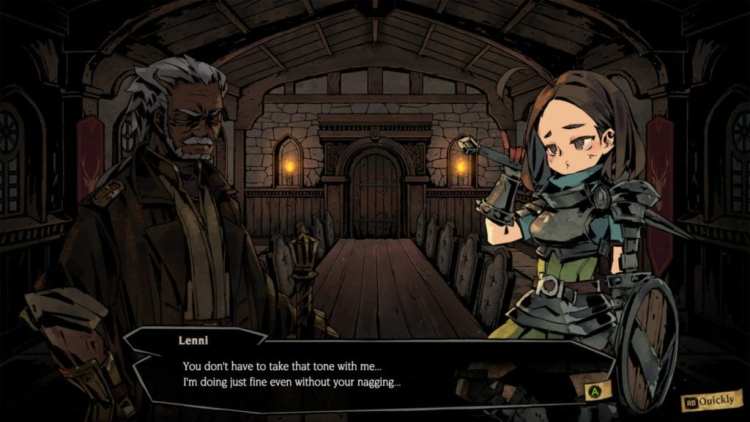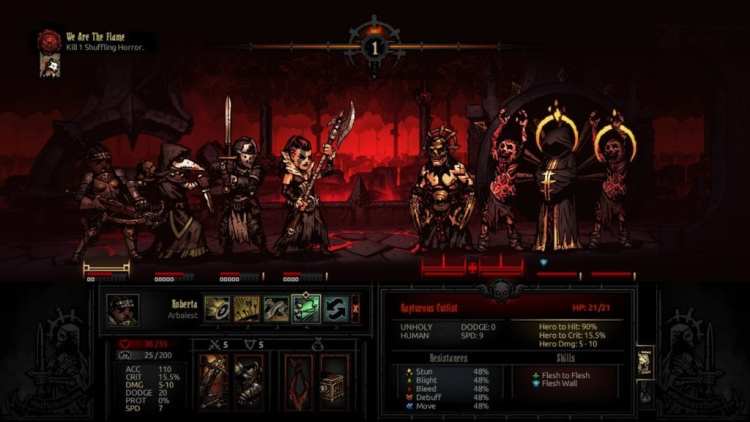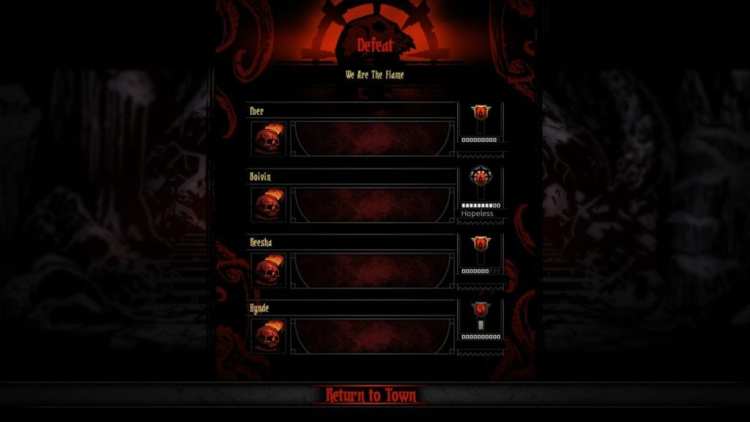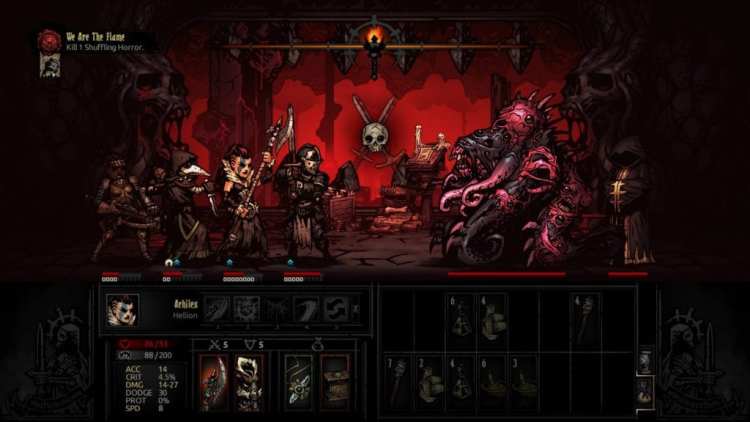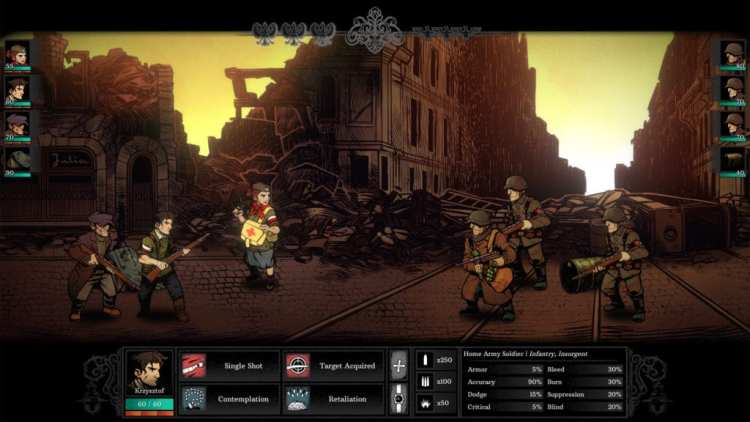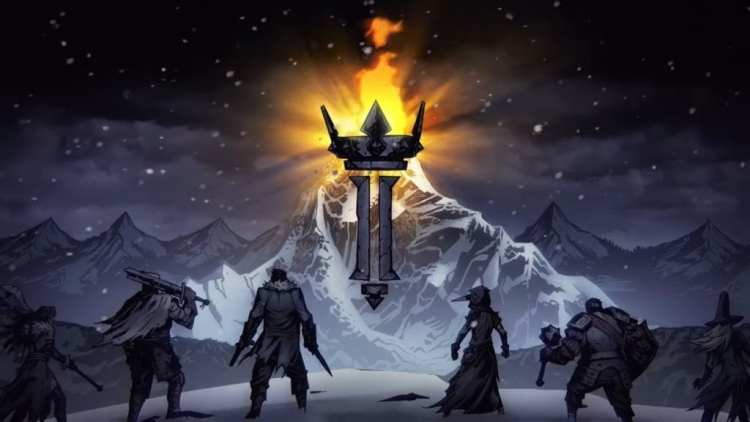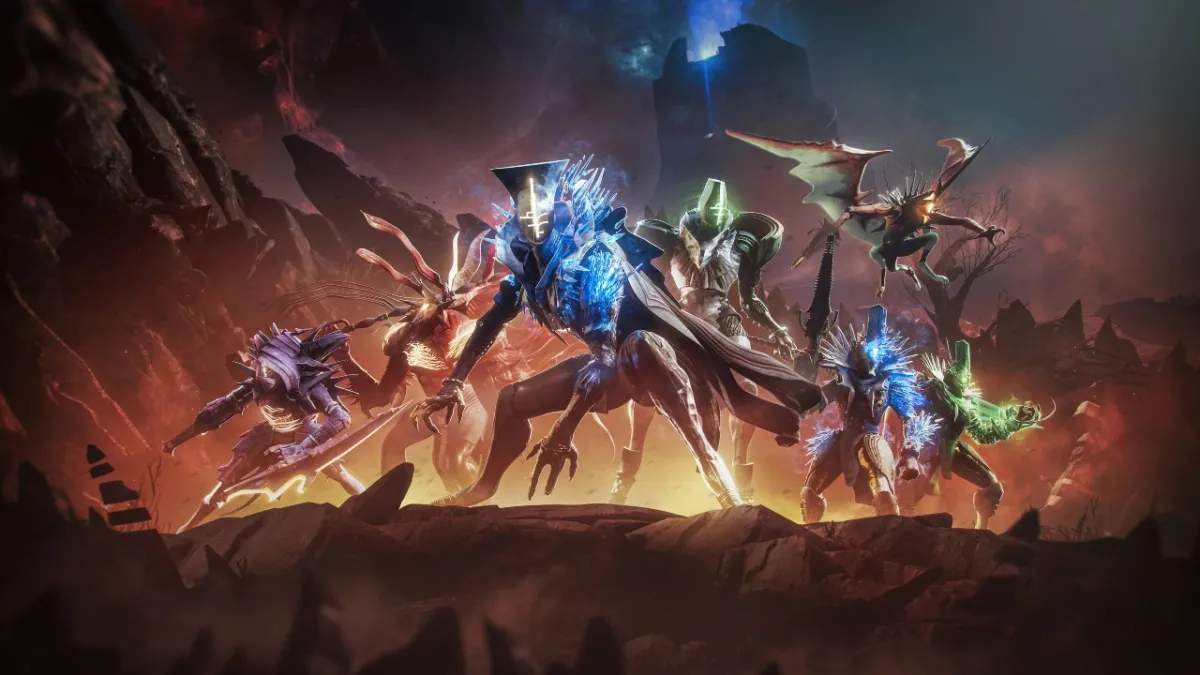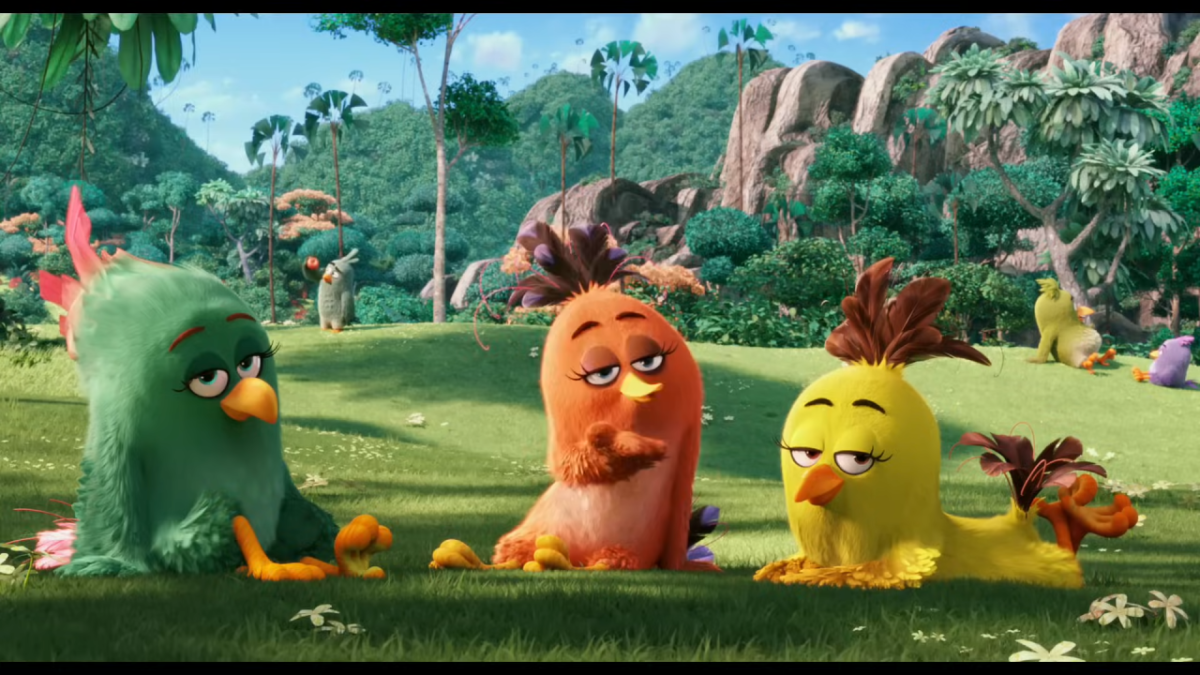Red Hook Studios’ indie breakout hit Darkest Dungeon first entered early access on Steam in 2015. Now, after four years and two expansions, a sequel is in the works. But arguably a more important sign that a game has really “made it” comes in the form of new titles inspired by the original.
October 2019 saw the release of two games based on the template set forward by Darkest Dungeon, but with their own twists. Warsaw is a historical skirmish game that sets the action in the titular city’s ill-fated 1944 uprising against the Nazi occupation. Mistover, on the other hand, keeps it fantasy, but with a distinctly anime flavor. Like it or not, the DD family tree is growing outside the bounds of the original franchise.
The imitation game
The video game industry has its own trends and follow-the-leader-style moments as creators follow the hot new thing. That’s not necessarily bad. Some of us long-in-the-tooth gamers remember a time before the term first-person shooter was coined in the gaming press. Instead, they were called Doom clones. In a sense that was accurate, but these spin-offs led to the variety of distinct but worthy FPS franchises we have today. Similarly, the Metroidvania genre takes its name from the two parents that many titles can claim a lineage of inspiration from.
Although the new releases do different things with the Darkest Dungeon DNA and won’t be knocking their inspiration off the top spot anytime soon, they promise a potentially rich wave of games to come in the genre. But what distinguishes the Darkest Dungeon-likes from the run-of-the-mill SRPG?
That Old School Revival feel
Darkest Dungeon may not strictly speaking be an RPG, but it perfectly captures the feeling of that more iconic double-D, Dungeons and Dragons, or at least a specific early incarnation of it.
The original version of D&D and its first Advanced and Basic editions were a far cry from what the game is today. Player characters were much less mechanically complex, encounters were much more dangerous, and a large emphasis was placed on resource management.
This involved keeping track of encumbrance and light sources, snatching as much treasure as possible while avoiding often lethal wandering monsters. Starting player characters had more in common with desperate tomb robbers than the Fellowship of the Ring. Their attributes owed more to random chance and emergent play than the choices of the player. Death was expected, but individuals were easily replaced. Sound familiar?
Over the past decade or so, a loose network of indie TTRPG (tabletop role-playing game) creators sought to recapture this particular spirit. Developers released back-to-the-roots-style dungeon crawling games under the loose umbrella of the Old School Revival (or Renaissance, depending on who you ask).
Some of the most successful examples of this new wave, such as Dungeon Crawl Classics and Lamentations of the Flame Princess, placed heavy emphasis on Lovecraftian weirdness and cosmic horror. Madness and attrition were as much of a danger to player characters as a dragon’s breath.
Darkest Dungeon wrapped up all these elements in an elegant package with distinctive visuals and evocative narration. It succeeded in delivering the gritty feeling, tense planning, and the triumph of success against the odds that this harsh genre embodied. A cousin in darkness to FromSoftware’s Souls series, it came at a time when gamers were craving something more challenging than the wish-fulfillment fantasies that crowded the AAA space. But it was still only one game and, even after two expansions, could only offer so much.
A game made to be changed
Even before the Darkest Dungeon-likes arrived, fans were eager to expand the formula in the form of mods. Darkest Dungeon‘s Steam Workshop and Nexus pages are full of mods that either tweaked the rules, added new classes and areas, or changed the visuals. It’s no wonder then, with the sequel announced but still forthcoming, that whole new games have emerged to scratch the itch for “more Darkest Dungeon, but different.”
Both Warsaw and Mistover hew to certain elements that mark them as Darkest Dungeon-likes. The hand-drawn art style, challenging turn-based squad combat, and punishing resource management are all there, as is the unpredictable RNG. They’re both games where you take on the role of a recruiter/manager of your squads rather than being present for the action in-universe. But they also ring true to the main theme of Darkest Dungeon, namely the struggle against impending doom, faint hope against crushing despair.
Warsaw eschews the eldritch horror of Darkest Dungeon for the very real horrors of World War II. However, it’s made all the worse because, with history being a forgone conclusion, the player knows that the Warsaw uprising didn’t actually succeed. All you can do is run out the clock and do your best before the end.
Mistover retains the Lovecraftian horror fantasy theme but is skinned in a cute anime style instead. Anime skin mods for Darkest Dungeon were already popular with the community, although Mistover‘s cutesy graphics do take the edge off the horror somewhat. Nonetheless, it features creeping doom in the form of the deadly apocalyptic mist that will return to bring about a Game Over in a number of weeks, which can be delayed by successful dungeon runs.
Interestingly, the hard-capped endgame on both these titles runs contrary the original Darkest Dungeon. It is a game where even if the enemies relentlessly beat you down and RNG seems to perpetually hate you, it’s always possible to recruit new heroes and grind again until you finally drive the boot into the final boss. The ending that awaits still may not be a very happy one, but a small victory, as the narration always reminds you, is always attainable.
Other distinctions between the three can dramatically shift the emotional tone of the game in very different directions. In Darkest Dungeon, your adventurer’s personalities are somewhat abstracted, and the player is encouraged to eventually see them as expendable fodder in service of their long-term goals.
Warsaw does the opposite and includes personal information about the lives of your resistance fighters to make you care about them. It tugs at the heartstrings when the inevitable goes down. Mistover‘s cutesy wrapping and lack of a stress meter and the associated psychological breakdown make it much lighter and softer in tone than either of the others.
The dungeon’s deep enough for all of us
So the new Darkest Dungeon-inspired games can offer different enough flavor and mechanics to be viable alternatives for some. But the real challenge remains to make something superior to the original. A close look at Warsaw and other recent arrivals reveal that there’s still some work to be done here.
That also goes for Red Hook Studios. Darkest Dungeon 2 was announced back in February this year, and beyond the arctic-looking teaser reminiscent of Lovecraft’s At the Mountains of Madness, we still don’t know many details.
What’s changed for the next generation of titles is the presence of competition on the field. Studios will be able to learn what works (and what doesn’t) from competitors on the market while attempting to distinguish themselves with unique selling points.
The result will hopefully be better options on the menu all around for those of us who enjoyed Darkest Dungeon or even who wanted to but felt that it needed a little something else.
It’s true that bandwagon-chasing has led to a glut of battle royales, MOBAs, and looter shooters from AAA studios. But Darkest Dungeon-likes are grindy but completable (so far), unlike many live-service games that can quickly drop support or updates if the player base turns its attention to competitors. There’s room for some options on the market.
So I say bring on more Darkest Dungeon-likes, bring on Darkest Dungeon 2, bring on hybrids like Iratus: Lord of the Dead. And while we’re at it, let’s see a couple more Cuphead-likes a la Enchanted Portals, too. Maybe we can have too much of a good thing in the indie game space, but we’re not there yet.


